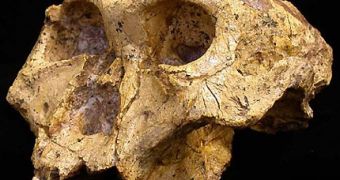Men dream on being polygamous, some do it unofficially, and in Muslim countries they do it legally; but, a new research, published in the journal "Science", shows that some early humans could have had "harems", such as male gorillas and orangutans have. This mating pattern in modern apes emerges when males mature later than females and grow significantly bigger: a large dominant male possesses a large female harem which mates only with him.
The team analyzed about 40 fossil skulls and teeth of "Paranthropus robustus", an African hominid species, 2 to 1.2 million years old, a dead-end branch of the human evolution. This species is an offshoot of "Australopithecus afarensis", from which our genus Homo evolved, too.
The fossils clearly revealed that male Paranthropus had delayed maturity, thus they could have formed "harems" similar to gorillas'.
"Orangutans are the most extreme situation. Male orangutans go through an amazing transformation. They put on a lot of weight and get flanges on the sides of their faces. They appear nearly twice their old size, though some of that is an illusion and the change in the skeleton is much more subtle." said lead author Charles Lockwood, an anthropologist at University College London.
Adult male orangutans can be 5 ft (1.5 m) tall and weigh over 200 pounds (90 kilograms), while females are around 3.5 ft (1 m) tall, weighing about 110 pounds (50 kilograms). In chimpanzees or in humans, where there are no harems (even if men dream about them) and males tend to cooperate, there are not such extreme gender size differences.
The researchers point that the fossils, discovered at the Cradle of Humankind World Heritage site (South Africa), are mainly deposited there by ancient predators (like leopards and hyenas), and the majority of the bones belong to males, which appeared to be preyed upon more often than females.
"Basically, males had a high-risk, high-return lifestyle in this species. They most likely left their birth groups at about the time they reached maturity, and it was a long time before they were mature enough to attract females and establish a new group. Some of them were killed by predators before they got the chance. One reason why that's important is because there are so few females in the fossil sample, [so] it appears that they were relatively safe. A key inference is that there were stable groups of females that would have allowed males to pursue this [harem] strategy." said Lockwood.

 14 DAY TRIAL //
14 DAY TRIAL //